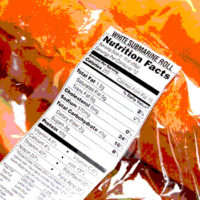The Future of Food: How to Correct and Prevent a Food Safety Crisis

Food safety concerns are at an all-time high and the global food industry is facing a raft of new regulations, including more frequent inspections and possibly higher compliance costs. The U.S. Centers for Disease Control and Prevention estimates that one out of every six people is sickened by a foodborne illness every year. So it is more important than ever for food manufacturers and retailers to have a stringent and industry compliant food manufacturing process in place to ensure proper food safety.
The U.S. Food and Drug Administration’s (FDA) Food Safety Modernization Act (FSMA) is focused on preventing contamination to ensure food safety. The most successful companies are typically those that view the FSMA regulations as an opportunity to develop systems and practices to improve their processes and quality, while gathering better insight into the data capture necessary for regulatory reporting. Food safety begins with having visibility of your suppliers and their manufacturing and supply chain processes. To do so, retailers need a strong compliance program that makes it easy to track suppliers’ and manufacturers’ adherence to FSMA regulations.
A Strong Compliance Plan
Despite the importance of food safety to a retailer’s brand and bottom line, many retailers are failing to comply with regulations. Although most retailers have a compliance program in place, many may be unaware if their suppliers are compliant, which can lead to food safety failures.
For a successful program, compliance should focus on reporting and visibility. However, many retailers use spreadsheets and PDFs, which are often out of date. These tools are not sufficiently suited to track compliance, and record keeping alone is not enough. Retailers must understand the impact compliance has on ensuring customer safety. For example, without a proper program in place, a retailer could be shipping from facilities that aren’t approved or compliant. Fail-safe mechanisms should be built into the compliance system to prevent events like this from happening.
A strong compliance plan is necessary to ensure communication among all parties completing compliance activities, including suppliers and third-party auditors or testers. A minimum of three to four assessments should be completed in a year. These can include testing manufacturing equipment for contamination or checking that gloves are being worn in all required job functions. All compliance activity should be planned properly so everyone knows what needs to be done and when.
Once the compliance plan is in place, retailers should assess their suppliers. This includes determining which facilities are in compliance, and which ones are not. This information should be available in a central location which will allow quality assurance teams—as well as a Global Food Safety Initiative auditor—to upload assessment results. Most importantly, individuals like the product and quality managers will also have access to the information and can make decisions based upon the results. They may then choose to identify certain risks at a facility and monitor them closely.
Having assessment and product information available in a central location allows retailers to quickly determine the potential impact of a facility’s compliance status change. For example, a retailer may identify an issue with a supplier and realize that 20 products need to be pulled off the shelf immediately.
Legislative Landscape
Public health legislation will be a focus in 2017, including a reduction in sodium initiative[1] and a foreign supplier verification program[2], which will require an audit of product at the port of arrival to ensure that safe manufacturing products were used and that the product is not contaminated.
Additionally, the FSMA Preventive Controls for Human Food rule became final in September 2016. It includes new requirements for maintaining and implementing a written food safety plan that includes preventive controls and corrective actions. Every facility must have a corrective and preventive action plan—a series of steps that need to be taken to collect and analyze information, identify and investigate product and quality problems and take appropriate and effective corrective and/or preventive action to prevent their recurrence.
Plans should include the following:
- Establishment of data sources and criteria, including internal and external, such as test/inspection data, device history records and internal audits.[3]
- Measurements and analyses of data sources: analysis of processes, work operations, concessions, quality audit reports, quality records, service records, complaints, returned product and other sources of quality data to identify existing and potential causes of nonconforming product, or other quality problems. Then, use a risk-based approach to rank areas and select items with major impact, that is, product related or process related [1].
- Improvement plans that identify which action needs to be taken, including correction, corrective action or preventive action[1].
- Input to management
Seeing a Plan in Action
In 2015, Blue Bell Creameries had to halt production and issue a massive recall for all its products due to a Listeria outbreak that was linked to its products. The outbreak could have been the result of bad ingredients or contamination with manufacturing equipment that wasn’t cleaned properly. Regardless, it’s important to note that this was a voluntary recall and possibly part of the company’s corrective and preventive action plan. Blue Bell identified the issue before the FDA had to step in. Because Blue Bell acted in a socially responsible way, the damage caused by the recall could be repaired.
Centralization is Crucial
With multiple sources updating many documents or spreadsheets, retailers are relying on the heroics of people spotting something to take action. The centralization of information improves efficiency and ensures things don’t slip through the cracks. Assessment and compliance plans help retailers identify issues early on. A corrective and preventive action plan guides organizations on how to deal with issues once they’re identified and will not only protect a retailers’ brand, but more importantly—its customers.
Don Low is a solutions consultant with Trace One, a provider of private label management software. For more information, please visit TraceOne.com.
References
1. https://www.cdc.gov/salt/pdfs/sodiumreductioninitiative.pdf.
2. http://www.fda.gov/downloads/Food/GuidanceRegulation/FSMA/UCM502160.pdf.
3. http://www.fda.gov/downloads/Training/CDRHLearn/UCM421767.pdf.
Looking for a reprint of this article?
From high-res PDFs to custom plaques, order your copy today!





